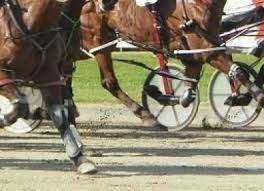A few days ago, I was playing a game of Words With Friends and put the word “GRAMS” down on the board, using my letter “S” to reach the Double Word spot and get 20 points.
My worthy opponent then added the letters P-I-C-O to spell PICOGRAMS and burn me with 40 points!
 I thought “what in blazes is a PICOGRAM?” and discovered that it is one-trillionth of a gram, which, broken down further, is about 1/30th of an ounce.
I thought “what in blazes is a PICOGRAM?” and discovered that it is one-trillionth of a gram, which, broken down further, is about 1/30th of an ounce.
This got my curiosity up a bit and, in checking further, there is also something else called a nanogram…and a femtogram and an attogram.
Believe it or not, a thousandth of a picogram is the aforementioned femtogram and, another thousand times smaller is that attogram…and then, still smaller, there’s the zeptogram, and yoctogram.
In numbers, a picogram be something like 1/1,000,000,000,000th of a gram, which would be 1/1000th of a kilogram or 0.001 kg.
So, why is this such a BIG DEAL?
Well, last week, when the Harness Horsemen International (HHI) meetings took place in South Florida, I was able to corral an old dear friend of mine going back at least 40 years and we spent an hour reminiscing about our sport and where it’s headed in the future.
Yes, Kim Hankins is, at least, a fifth-generation horseman with his family having roots going back more than a century with Grandma Burright, Joyce Burright Hankins, Jack Hankins and, pretty much, the entire Burright family involved.
Most recently, Kim Hankins has been known as the Executive Director of The Meadows Standardbred Association and has played a key role in the legislative process in Pennsylvania to ensure the future of harness racing in his area.
Kim was pretty handy with the lines, too. Remember Tiny Laramie?
Oddly, the use of the word “PICOGRAM” came up, spawning this Mane Attraction.

With drug testing on the front burner these days in racing and just about every other athletic sport, the rules are getting very strict with watchdogs—specifically the HISA (Horseracing Integrity and Safety Authority) lurking over our shoulders, which may make the future even tougher on anyone breaking or, even, stretching the allowable dosage of medications.
Harness racing is not the only sport that is involved in testing, but these watchdogs are trying to pounce on this subject with the conversation far from over or reaching an equitable solution.
I do not pretend to be an expert on this subject matter—far from it—VERY FAR—but testing processes these days are getting very sophisticated with even a minute overage can cause havoc for trainers and owners with long term effects for our horses, their trainers and handlers with far reaching tentacles reaching the owners—yes, everyone involved with any specific horse.
Phenylbutazone (BUTE) is a permitted medication for a horse, furosemide (LASiX) is, as well, as are certain anti-ulcer meds and these medications cannot exceed thresholds defined by the State’s rules.
Of course, we’ve all heard of anti-depressants, nerve blockers and snake venom said to be used…and I’m not nearly smart enough to know about all of them but the walls seem like they are closing in to have a watchdog oversee our sport if we cannot do it ourselves.
Kim Hankins is, rightfully, worried that and with modern testing facilities able to find minute traces of medications these days—like PICOGRAMS—there could be an explosion of “positives” that result in unfair penalties.
Hankins says that technology and modern testing methods can detect TWO GRAINS OF SALT in a SWIMMING POOL.
He further stated that “drug testing has come a long, long way over the years with advancements in technology and innovation.
“It’s more efficient, accurate and accessible but, make no mistake, it can also lead to cases that should never be brought to the fore.
“These new testing procedures can detect drugs at a lower concentration than ever before. They are more sensitive and especially important for drugs that are present in ‘picogram’ quantities.
“Whether it’s an airborne sneeze carrying a picogram of something illegal or something transferred from one feed bucket to another, if traces can cause positives, those traces can result in an inaccurate finding…and an unjust ruling.”
Tim Tetrick offered this as his three priorities…”This sport needs universal medication rulings specific to the needs oof thee standardbred.
“Trainers and veterinarians are physically and mentally exhausted by the different withdrawal periods and allowances from track to track.
“Many ‘positives’ are minor infractions due to those State differences which, in turn, creates a horrible perception to the public.’
“The next would-be universal rulings for horsemen. When we travel from track-to-track, it’s difficult to remember specific rules for each track which, again, means most infractions are never intended but, simply, a product of human error in attempting to keep up to date with changes and updates.
“As for a third priority, it’s a dead-heat because we need a universal set of regulations, instead of each State having their own set of regs (regulations).”
David Miller echoed Tetrick’s thoughts saying, “You know, I’ve been doing this my whole life, and nobody can get on the same page. It would be nice if we could get everyone on the same page as far as rules and regulations are concerned. That would be nice.”
Yet another long-time trainer (preferring to remain anonymous) voiced his opinion by saying, “saliva-based testing is one of the new innovations. It’s done in some workplaces and in schools and has huge implications for the future. It’s quick and, hopefully, accurate and has big potential for the future.”
Yet another innovation on the horizon is drug testing with “wearable devices” monitoring drug use in real time.
We already have wearable technology for diabetics and pre-diabetics measuring glucose and it provides a continual stream of data.
And what will happen when AI (artificial intelligence) drug testing comes into reality?
Yet another well-known trainer, who claims to have limited knowledge on this subject states, “I really don’t worry too much about the drug stuff…but I do worry about whether we will have any racetracks left in the next 20-30 years.
“If you think the casino owned tracks are going to look out for racing, you are mistaken. They would like nothing more than to have an excuse to get rid of racing and a rapid increase in positives and penalties might well be their ticket out of the pari-mutuel business—something they would cherish because racing is a drain on their bottom line.”
Governmental intervention has not shown to be a good thing in recent years—especially in our current Congress and many of its agencies. If our sport doesn’t hurry up and show it can govern itself with a Commissioner that is fair—but intolerant of drug use—with one set of standards throughout our harness racing land (maybe all of North America), the problems will become even more serious with litigation between rulings in many States that have different rules.
One bettor, who professes to participate in many sports via the “prop” betting route said, “Lemme just say that racing, in general, needs to get in line with other sports. In baseball or football or any other sport which you can get a little action on, there’s are rules that kind of covers the entire sport.
“When a team is off-sides in football, it’s not a five-yard penalty in Chicago and a 10-yard penalty in San Francisco. IT’S A FIVE-YARD PENALTY…PERIOD!
“In baseball, there are specific rules for the ball and how it’s made, the bat, from the handle in length and diameter, and the gloves for the various positions.
“In harness racing, I even look for the different type of sulkies used for any edge I can find. Maybe they should all be forced to use the same type sulky in a race.
“I remember when the single shaft came out in the 1970’s and we were all betting on the sulky, not the horse!
“You want to level the playing field for everyone? Maybe that’s one way—paddock sulkies in use for all horses!
“But lemme tell ya, every major sport has a commissioner and harness racing cannot be a major sport without one! Make no mistake, harness racing needs a fair-minded, strong Commissioner that has the power to deal out fines and suspensions—with transparency—to show the betting public that the sport is clean…if that’s ever possible.”
Finally, one prominent State official confided that “this whole program needs a lot of work to make it work.
“From proper thresholds to equitable fines to hiring well-versed, knowledgeable personnel—not political appointees that have no knowledge of the industry or medication issues—it’s a program that needs a long way to go before credibility can be achieved for all types of equine racing events.”
If there is an answer to this situation, we’ve got a long way to go to find it!
Maybe it’s in a PICOGRAM of all the information available on this subject.
Good luck with that!
May the Horse Be With You
by John Berry, for Harnesslink

 USA
USA Canada
Canada Australia
Australia New Zealand
New Zealand Europe
Europe UK / IRE
UK / IRE



